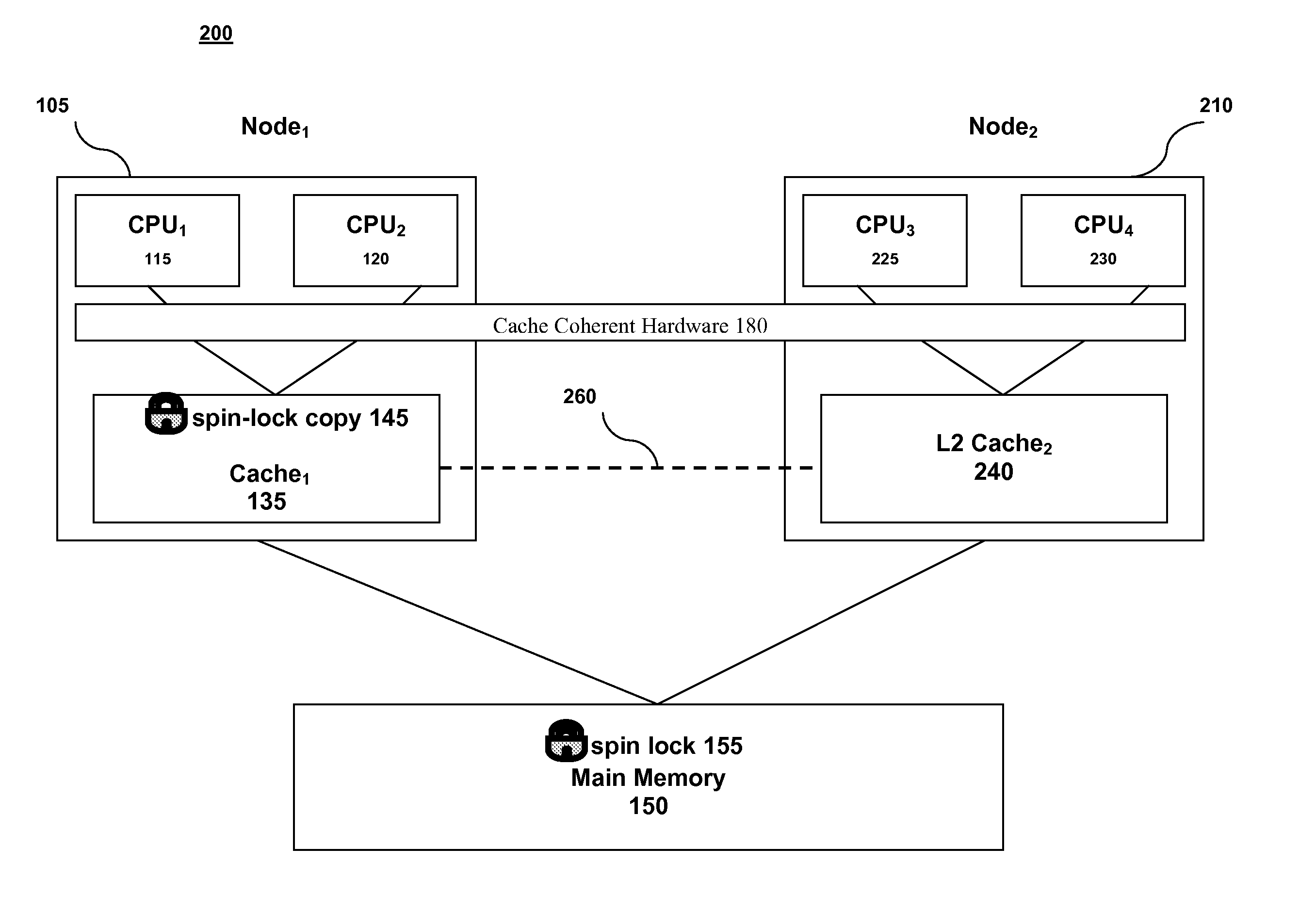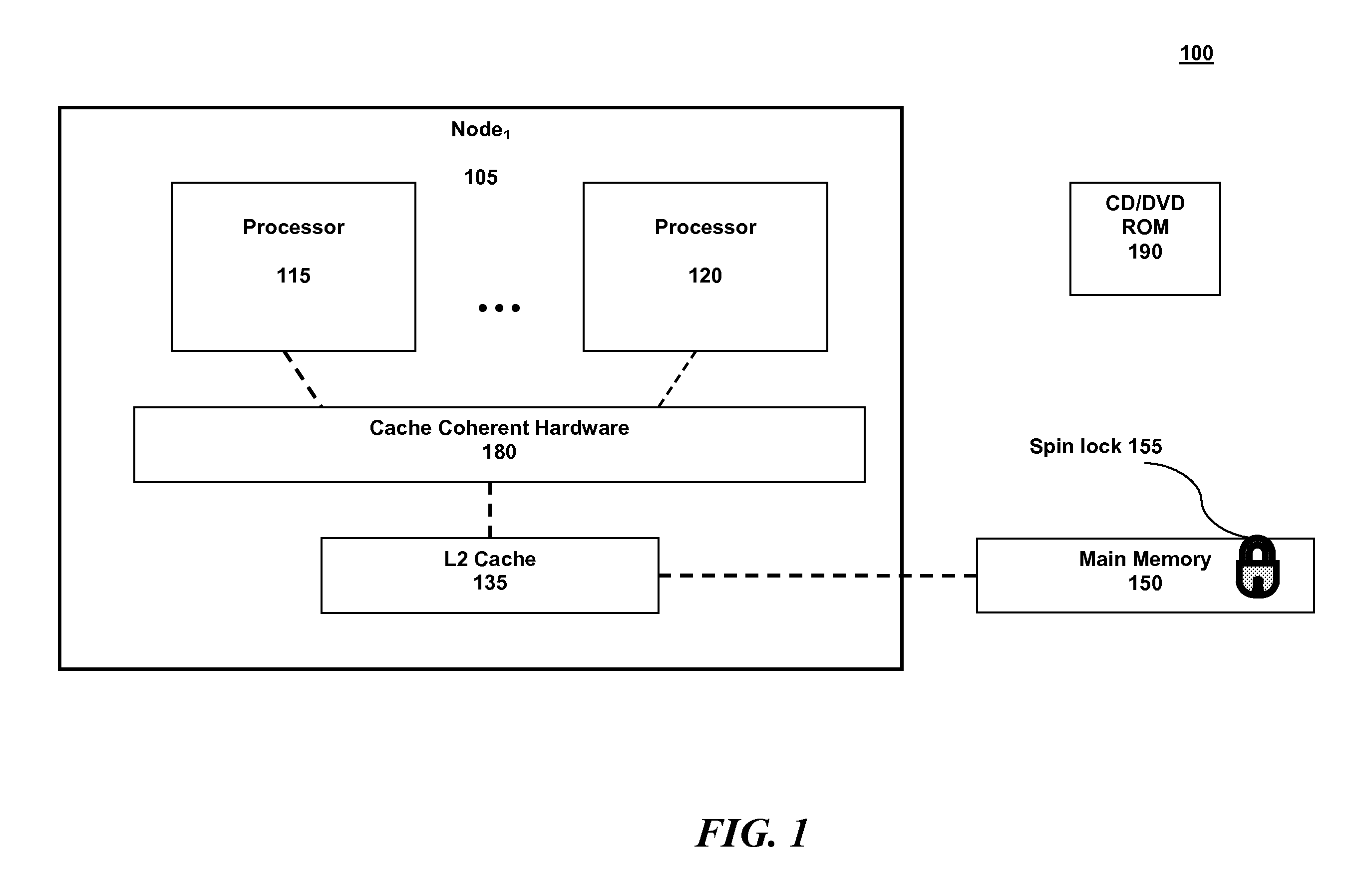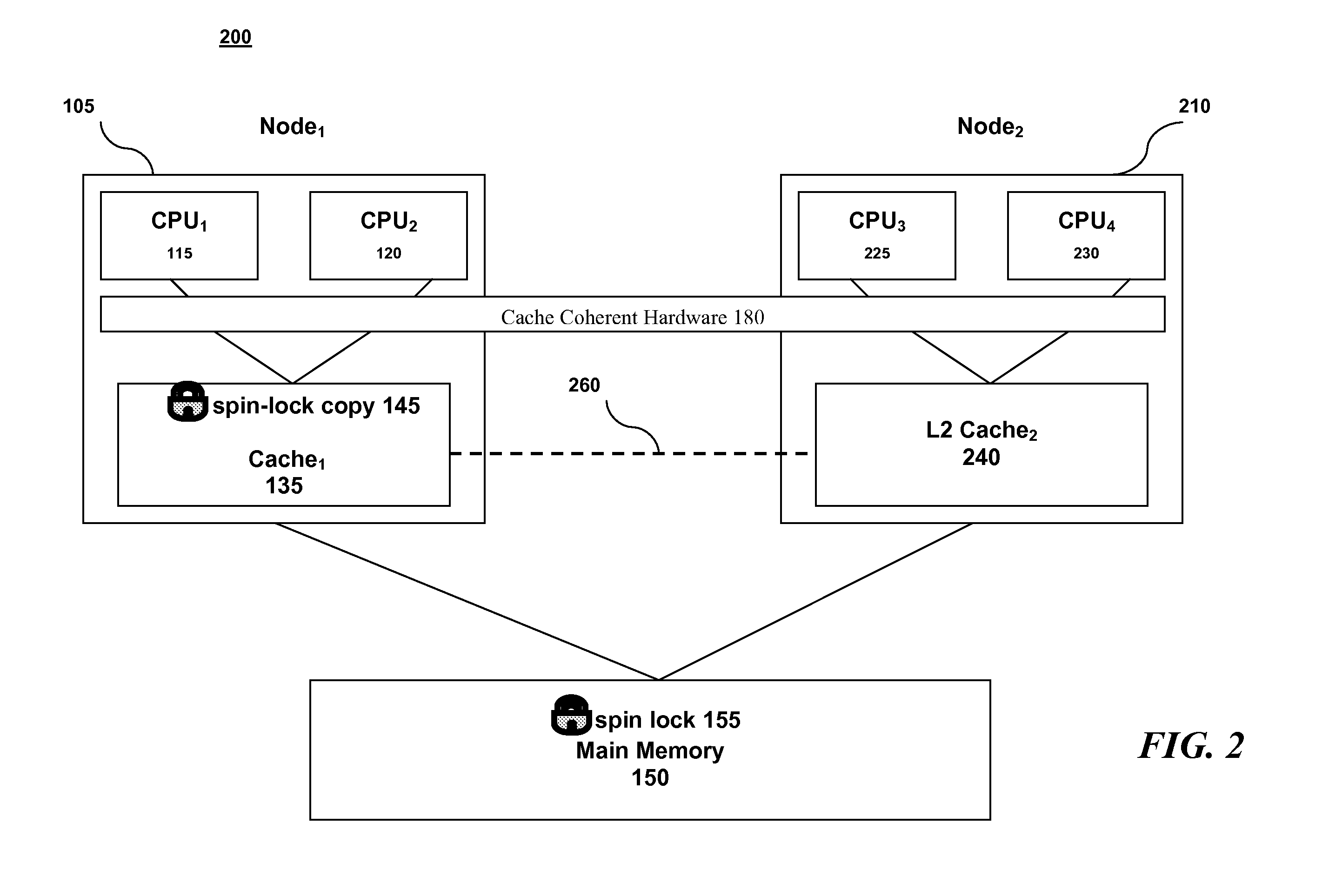Achieving Both Locking Fairness and Locking Performance with Spin Locks
a spin lock and fairness technology, applied in the field of spin locks, can solve the problems of high lock contention, spin locks can create locking starvation, and computer systems can suffer severe performance degradation
- Summary
- Abstract
- Description
- Claims
- Application Information
AI Technical Summary
Problems solved by technology
Method used
Image
Examples
Embodiment Construction
[0020]We describe a method for providing locking fairness at high contention without sacrificing locking performance at low contention for large-scale, Non-Uniform Memory Access (NUMA) distributed shared memory multiprocessor architectures, according to an embodiment of the invention. This is achieved through a key aspect of the invention:
[0021]A “cooperative” feature to the existing spin lock mechanism provides statistical locking fairness at high contention without any additional lock data structure and algorithm; therefore retaining its locking performance at low contention. It is more beneficial to provide statistical locking fairness rather than the absolute locking fairness targeted by existing locking mechanisms. Statistical fairness means that all of the lock contenders have an equal chance of acquiring a lock, while absolute fairness means that all of the lock contenders have an equal number of times a lock is actually acquired. While statistical fairness is a weaker condit...
PUM
 Login to View More
Login to View More Abstract
Description
Claims
Application Information
 Login to View More
Login to View More - R&D
- Intellectual Property
- Life Sciences
- Materials
- Tech Scout
- Unparalleled Data Quality
- Higher Quality Content
- 60% Fewer Hallucinations
Browse by: Latest US Patents, China's latest patents, Technical Efficacy Thesaurus, Application Domain, Technology Topic, Popular Technical Reports.
© 2025 PatSnap. All rights reserved.Legal|Privacy policy|Modern Slavery Act Transparency Statement|Sitemap|About US| Contact US: help@patsnap.com



